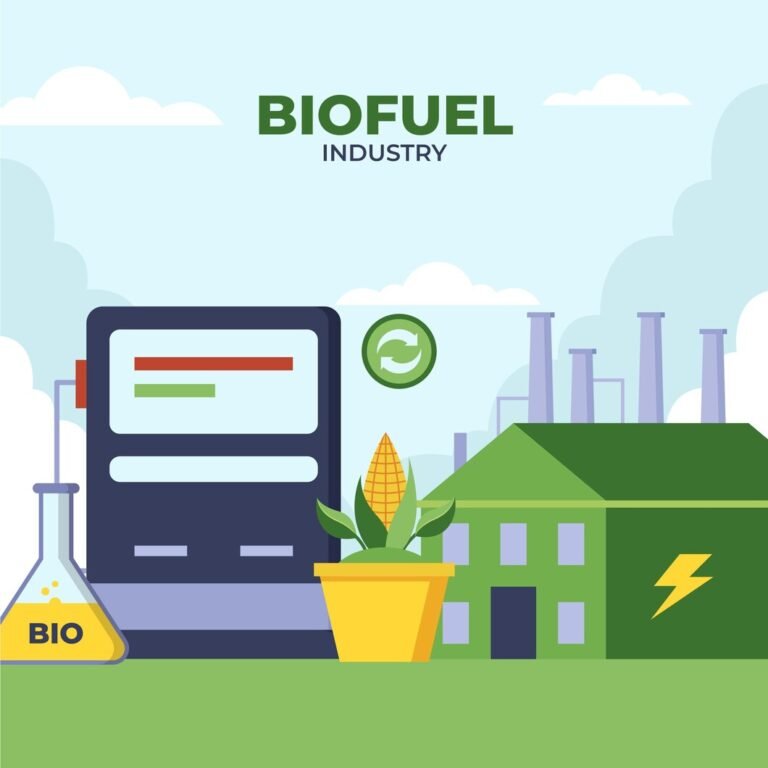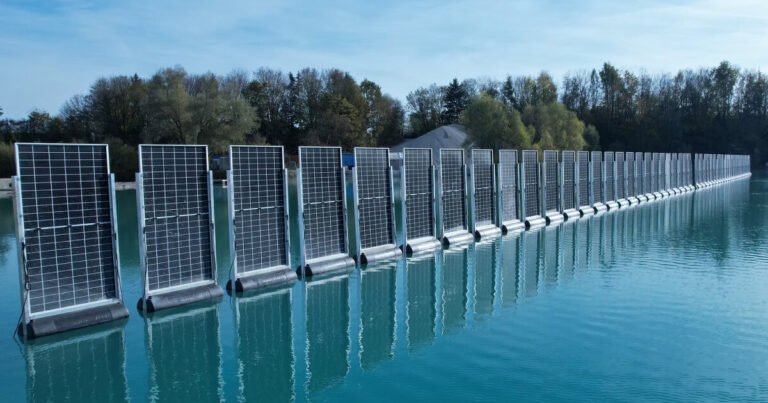How Solar Energy Supports Thailand’s Climate Goals
Under the golden glow of tropical sunshine, Thailand is quietly but confidently transforming its approach to energy. No longer just the “Land of Smiles,” it’s fast becoming the land of solar innovation. As the impacts of climate change intensify, this Southeast Asian nation is turning to one of its most abundant natural resources—sunlight—to lead the charge toward a cleaner, more sustainable future. With visionary companies like Constant Energy driving solar development, Thailand is proving that renewable energy isn’t just an environmental imperative—it’s also a strategic opportunity.

Thailand’s Bold Climate Vision
Thailand is making significant strides in its commitment to combat climate change, setting ambitious goals to achieve carbon neutrality by 2050 and net-zero greenhouse gas emissions by 2065. These targets, outlined in the country’s second Nationally Determined Contribution (NDC) submitted to the UNFCCC in 2022, reflect Thailand’s recognition of the urgent need to address climate-related challenges, particularly given its reliance on tourism and agriculture.
To meet these objectives, Thailand aims to reduce its greenhouse gas emissions by 30% from the projected business-as-usual levels by 2030, with the potential to increase this reduction to 40% contingent upon receiving adequate international support. This commitment shows the nation’s proactive approach to integrating climate considerations into its development agenda.
A key pillar of Thailand’s strategy is the expansion of renewable energy, with solar power playing a pivotal role. The country’s geographical advantage, receiving an average solar irradiance of 5.06 kilowatt-hours per square meter per day, positions it favorably for solar energy development. This natural endowment is being leveraged to transform Thailand’s energy landscape, reducing dependence on fossil fuels and enhancing energy security.
The Solar Revolution Takes Root
Across Thailand, the adoption of solar energy is gaining momentum. Residential, commercial, and industrial sectors are increasingly investing in solar installations, driven by supportive government policies and the declining cost of solar technology. In urban areas like Bangkok and Chiang Mai, rooftops adorned with solar panels have become a common sight, reflecting a broader shift towards sustainable energy practices.
In the residential sector, homeowners are installing solar systems ranging from 3 to 5 kilowatts, often achieving a return on investment within 6 to 8 years. These systems not only reduce electricity bills but also contribute to the national grid’s stability. Commercial entities, including shopping malls and office buildings, are transforming their rooftops into power-generating assets, aligning with environmental, social, and governance (ESG) goals.
Case Study: Central Pattana’s Solar Initiatives
Central Pattana, Thailand’s leading retail property developer, exemplifies the commercial sector’s commitment to renewable energy. The company has implemented solar rooftop projects across several of its shopping centres, generating significant amounts of clean energy. By integrating Building Integrated Photovoltaics (BIPV) into its developments, Central Pattana not only reduces its carbon footprint but also sets a precedent for sustainable real estate practices in the region.
Beyond Urban Centres: Rural Transformation
The benefits of solar energy extend beyond urban areas, reaching rural communities that previously faced challenges with reliable electricity access. In regions like Isaan, solar-powered microgrids are providing consistent power, enabling activities such as nighttime studying for children and the operation of irrigation systems for farmers. These developments are fostering economic growth and improving the quality of life in these communities.
Innovative Solutions: Floating Solar Farms
Thailand is also pioneering innovative renewable energy solutions, such as the hydro-floating solar hybrid project at Sirindhorn Dam in Ubon Ratchathani Province. This project, which began commercial operations in October 2021, combines solar and hydropower technologies to generate 45 megawatts of electricity. It is expected to reduce greenhouse gas emissions by approximately 47,000 tons annually, showcasing Thailand’s commitment to integrating cutting-edge technologies in its renewable energy portfolio.
Policy Framework and Government Incentives
Thailand’s solar boom is propelled by strategic government policies:
1. Feed-in Tariffs (FiTs)
Thailand’s FiT program offers long-term, fixed-rate payments to solar producers who feed electricity into the national grid. For example, solar projects receive approximately THB 2.1679 per kilowatt-hour under a 25-year contract, while solar-plus-storage setups earn even more. This stability has attracted both local and international investors, ensuring that solar energy isn’t just environmentally friendly but also financially viable.
2. Smart Grid Development
Thailand is also investing heavily in modernising its energy infrastructure. Through initiatives like the ERC Sandbox, the country is testing smart grid technologies and energy storage solutions to better manage the variability of renewable sources like solar and wind. These upgrades are essential for ensuring a stable and efficient power supply as more renewables come online.
3. Solar Rooftop Program
To make solar adoption easier, the government has streamlined the permitting process for rooftop installations. Homeowners and small businesses can now apply through local electricity authorities, with the goal of adding 10 megawatts of rooftop solar capacity annually until 2030. This initiative not only reduces energy bills but also empowers individuals to contribute to the national grid. Additionally, a tax incentive program running from 2024 to 2027 aims to support 90,000 households in adopting solar energy.
4. BOI Incentives
The Board of Investment (BOI) offers generous incentives to renewable energy projects, including 5 to 8 years of corporate income tax exemptions and import duty waivers on machinery. Projects focused on solar energy, biomass, and biogas are particularly favoured, reflecting Thailand’s commitment to a diverse and sustainable energy mix.
Business and Industry: Leading by Example
Thailand’s private sector is stepping up as a key player in the country’s solar energy transformation. Companies are not only cutting electricity costs but also aligning with global sustainability goals.
Constant Energy has been instrumental in this shift. They’ve partnered with major manufacturers like Midea Refrigeration Equipment (Thailand), installing a 12 MW rooftop solar system expected to reduce carbon emissions by 130,000 tons over its lifespan. Similarly, Tata Steel Thailand collaborated with Constant Energy for 11.8 MW of solar capacity across three factories, marking the largest solar installation on a steel mill in the country.
Other notable collaborations include projects with Panasonic Energy (Thailand), Molten (Thailand), and Fuji Seal Packaging (Thailand), each integrating solar solutions to power their operations and reduce environmental impact.
BCPG Public Company Limited, a subsidiary of Bangchak Corporation, has also made significant strides. They’ve acquired multiple solar power plants and invested heavily in renewable energy projects, aiming to increase their clean energy capacity to 70% by 2030.
Overcoming Challenges
Despite success, several challenges persist:
1. Grid Capacity and Storage
Thailand’s electrical grid was originally designed for centralised power generation, making it less adaptable to the variable nature of solar energy. Modernising the grid is essential to accommodate the increasing share of renewables. According to EOS Global Expansion, one of the major technical hurdles Thailand faces is the modernisation of its electricity grid to accommodate variable renewable energy.
2. Storage Costs
Battery storage is crucial for managing solar energy’s intermittency, but costs remain high. Thailand is exploring solutions like lithium-ion and flow batteries. For instance, Global Power Synergy Public Company (GPSC) initiated a semi-solid lithium-ion battery pilot plant in Rayong province, aiming to expand production capacity to 100 MWh. Additionally, China’s Sunwoda invested $1.5 billion in Thailand’s battery manufacturing sector, reinforcing the country’s role in the regional energy storage supply chain
3. Urban Constraints
Urban areas, especially cities like Bangkok, face challenges in adopting solar energy due to high-rise buildings and limited rooftop space. To overcome this, community-based initiatives are emerging. While specific details on the “Bangkok Solar Coop” are limited, Thailand is actively promoting community solar projects. The government-backed “Solar for All” initiative encourages households to install rooftop solar panels by providing financial incentives, aiming to increase solar capacity by an additional 1 GW.
Despite these challenges, Thailand’s commitment to renewable energy remains strong. With continued investment and innovation, the nation is poised to overcome these obstacles and achieve its sustainable energy goals.
Thailand’s Sunny Outlook
As Thailand works toward its climate goals, solar energy is not just a contributor – it’s a catalyst. The country is proving that development and sustainability can go hand in hand. With a combination of government policy, private sector investment, and community engagement, Thailand is lighting the way for Southeast Asia.
Lessons for Developing Countries:
- Utilise natural advantages (sunshine, land, dams).
- Create favourable policies to attract investment.
- Educate and involve communities for long-term success.
Conclusion: Actionable Advice for Policymakers and Citizens
For Policymakers
1. Expand Energy Storage Subsidies
While Thailand has introduced incentives for energy storage systems (ESS), expanding these subsidies can further enhance grid reliability and support renewable energy integration. By providing financial support for both large-scale and residential storage solutions, the government can ensure a more stable and efficient energy supply.
2. Promote Community Solar Programs
The National Energy Policy Council’s decision to increase the annual quota for public solar power projects from 100 MW to 400 MW is a significant step. Encouraging community-based solar initiatives can empower localities, reduce electricity costs, and foster collective responsibility towards sustainable energy.
3. Encourage Agrivoltaics in Agriculture
Integrating solar panels with agricultural practices, known as agrivoltaics, allows for dual land use—generating energy while cultivating crops. Policies that support agrivoltaic projects can optimise land resources and provide additional income streams for farmers.
For Citizens
1. Consider Rooftop Solar Installations
Installing solar panels on rooftops can significantly reduce electricity bills and contribute to the national grid. Programs like “Solar for All” offer financial incentives to make this transition more accessible.
2. Support Local Solar Cooperatives
Joining or forming solar cooperatives allows communities to pool resources for shared solar installations. This collective approach can make solar energy more affordable and foster community engagement in sustainable practices.
3. Participate in Sustainability Education
Engaging in sustainability education programs, such as the Thai SDG Micro-Primer, can enhance awareness and understanding of environmental challenges. Educated citizens are better equipped to make informed decisions and advocate for sustainable policies.







